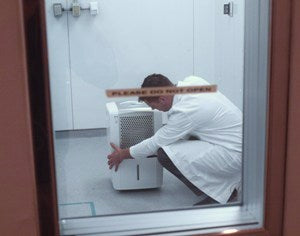Most air filter manufacturers can present fantastic air filter test results for their products - and many claiming their product to be the best air purifier. But can air filter test results be trusted? Whether you're dealing with asthma, chemical sensitivity, or just want to improve your indoor air quality, you deserve to know if the air purifier you are planning to buy will actually make a difference. For that reliable and accurate air filter test results are important.
Any given air filter test result might not be able to tell you which model of air purifier to buy – much depends on the area you want to clean if you have any specific medical respiratory conditions, and what kind of pollution you're interested in removing. High-Efficiency Particulate Air (HEPA) purification achieves the best results in tests that focus on the most effective and reliable particulate removal. If you want to remove gases and chemicals such as second-hand smoke, you will want to look for tests that test air filter with an adsorbent filter media. The best media for that is high quality activated granular carbon, or to a lesser degree, coconut based carbon.
If you are about to purchase an air cleaner, we always recommend looking for test results from independent expert companies. This will not be easy to find, because some test companies claim to be independent (even though they are not) and others are independent, but they do not understand much about air purification. To find out more please visit our best air purifier information page. The organisation's National Testing and Research Center put 38 models of air purifier to the test.
A good way to test an air filter is to place it in a test chamber into which fine clay dust and cigarette smoke are introduced (to simulate common indoor air pollution). The air purifier is switched on to do its job and a sensitive laser particle counter is used to show how well, and how quickly, it reduces the particle concentration in the room. The method can be adapted, using analytical instruments instead of the particle counter, to measure performance on gaseous pollution.
The Consumer Reports assessment, for example, measures the following (and they make a suggestion on what to look out for, and what questions to ask):
- Dust and smoke removal at both high and low speeds and over longer periods of time (some air purifiers do well at first, but their filtration efficiency decreases very quickly)
- Noise output at both high and low speeds (you don't want your air purifier to drive you mad with noise distraction when you are working, studying or sleeping)
- Cost – in terms of filter replacements and energy
- Room size – how big a room can the air purifier deal with, how many air changes per hour will it deliver?
Air purification is a complex field, and creating accurate air filter test results is more challenging than evaluating other common consumer and allergy friendly products such as toasters or baby food.
We would always recommend to always take a holistic approach to improve your indoor air quality. Keeping gas appliances well maintained, using non-toxic cleaning products, regular vacuuming and damp dusting, eliminating cigarette smoke and avoiding burning candles and using poorly vented wood stoves are an important part of reducing indoor air pollution.




